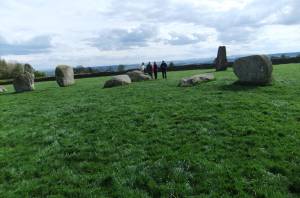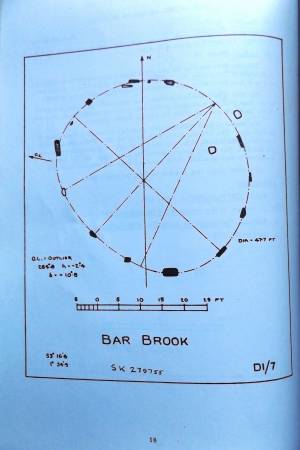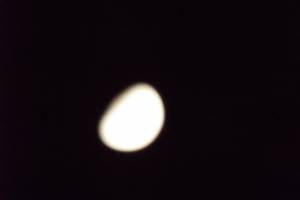|
| *****SWAAG_ID***** | 847 |
| Date Entered | 13/01/2015 |
| Updated on | 19/01/2015 |
| Recorded by | Tim Laurie |
| Category | Standing Stones / Circles |
| Record Type | Archaeology |
| SWAAG Site Name | |
| Site Type | |
| Site Name | |
| Site Description | |
| Site Access | Public Footpath |
| Record Date | 00/04/2012 |
| Location | Various. The Vale of Eden |
| Civil Parish | Not known |
| Brit. National Grid | |
| Altitude | |
| Geology | Glacial erratic boulders over drift. |
| Record Name | SWAAG in Eden April 2014. Return to Long Meg and a ray of moonshine on some great stone circles. |
| Record Description | At the beginning of the New Year, it is thought appropriate to remind ourselves of one of the highlights of the 2012 visit by SWAAG members to see spectacular archaeological landscapes of the Vale of Eden and eastern fringes of the Lake District . In so doing we shall cast a faint ray of moonshine on a possible purpose and of the construction of a number of great stone circles. |
| Dimensions | See photos. |
| Geographical area | |
| Species | |
| Scientific Name | |
| Common / Notable Species | |
| Tree and / or Stem Girth | |
| Tree: Position / Form / Status | |
| Tree Site ID | 0 |
| Associated Site SWAAG ID | 0 |
| Additional Notes | Theodolite surveys of all known stone circles throughout the British Isles were undertaken by Alexander Thom and his son Archie Thom, both very distinguished Academics in Engineering Science, with the main objective of demonstrating the astronomical significance of their construction. Whether this objective was achieved has been the subject of very considerable discussion and I do not intend to add to this except to say that the theodolite surveys were completed to a very high degree of accuracy by Engineers of high repute.
Following the surveys and drawing of the site plans, each stone ring was analysed to determine the geometric shape of each stone ring and to look for possible astronomic alignments within the stone settings.
The results of this work have been summarised in two publications, namely:
A. & A.S. Thom 1980. 'Megalithic Rings.' British Archaeological reports British Series 81.
Aubrey Burl 1976. 'The Stone Circles of the British Isles.' Yale.
One conclusion which may have hitherto been overlooked in the literature and which may fairly be considered from the analyses of the shapes of the stone rings is the presence of a significant number of stone rings which have one flattened edge. See the examples from A. and A.s. Thom 1980 attached below as photo images nos 7,8 and 9.
This flattened circle exists ONLY in Nature as the face of the Gibbous Moon, at the waxing gibbous and waning gibbous quarters. The flattened circular form of Long Meg and other Stone Rings throughout Britain is exactly similar to the shape of the Moon on the days before and after Full Moon. This suggests the question: 'Were our Prehistoric Ancestors constructing the stone rings to reflect the unique form of the waxing and waning moon?' If so the construction of these rings could have been to honour the Moon Goddess and at the same time construct practical astronomic observatories to mark the seasons.
Sceptical observers will say that the geometry reflects the inability of any primitive labour force to lay out or work to a perfect circle. Individual stones creep down slope through time. Stone rings of perfect circular form are certainly the exception not the rule. Egg shaped and oval shaped rings are usual for the smaller stone rings.
See http://www.calendar-uk.co.uk/lunar-calendar/ |
| Image 1 ID | 6042 Click image to enlarge |
| Image 1 Description | Vale of Eden. Blencathra seen from within Long Meg and Her Daughters. |  |
| Image 2 ID | 6044 Click image to enlarge |
| Image 2 Description | Long Meg and the entrance feature to Her Daughters, the great stone ring. |  |
| Image 3 ID | 6045 Click image to enlarge |
| Image 3 Description | Long Meg and her uncountable daughters, western perimeter of the ring. |  |
| Image 4 ID | 6046 Click image to enlarge |
| Image 4 Description | Counting the stones- a hopeless task. |  |
| Image 5 ID | 6047 Click image to enlarge |
| Image 5 Description | One of the very large stones all of which are glacial erratic boulders, except for Long Meg herself who is a slab of Triassic Sandstone from the cliffs of the River Eden. |  |
| Image 6 ID | 6048 Click image to enlarge |
| Image 6 Description | The Great Stone Ring seen from two fine old ash trees by the farm road. |  |
| Image 7 ID | 6049 Click image to enlarge |
| Image 7 Description | Long Meg and her Daughters. A. & A.S. Thom 1980. 'Megalithic Rings.' British Archaeological Reports British Series 81. Figure L1/7 pp42,43.
|  |
| Image 8 ID | 6050 Click image to enlarge |
| Image 8 Description | Castle Rigg, Keswick. Stone Circle
A. & A.S. Thom 1980. 'Megalithic Rings.' British Archaeological Reports British Series 81. Figure L1/1 pp28,29. |  |
| Image 9 ID | 6051 Click image to enlarge |
| Image 9 Description | Barbrook, Derbyshire.
A. & A.S. Thom 1980. 'Megalithic Rings.' British Archaeological Reports British Series 81. Figure D1/7 pp18/19. |  |
| Image 10 ID | 6052 Click image to enlarge |
| Image 10 Description | The Moon Gibbous Waxing Phase. |  |









